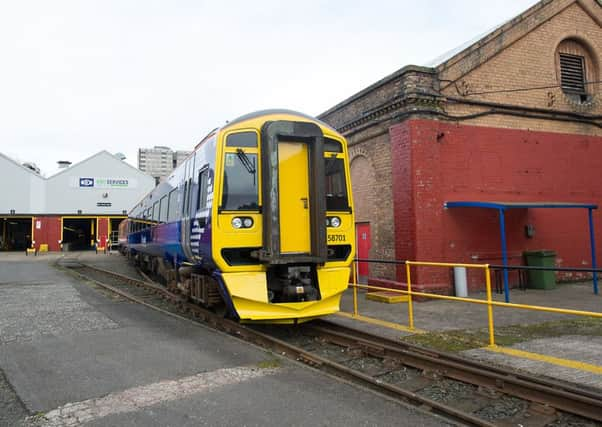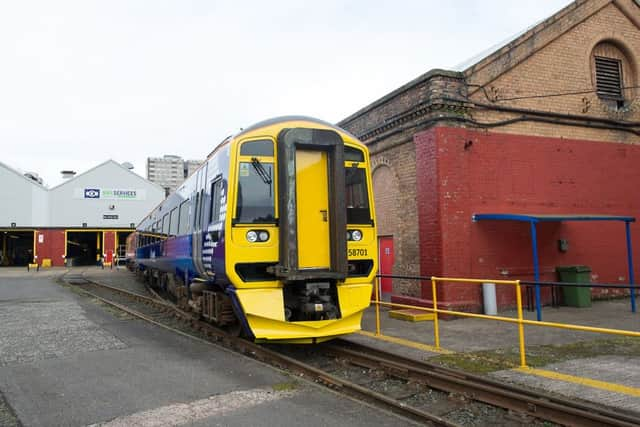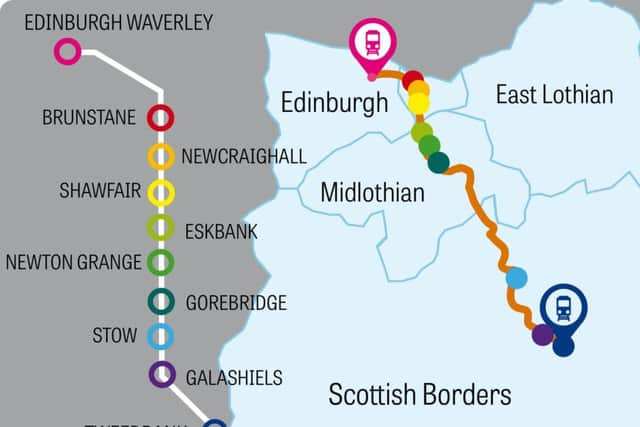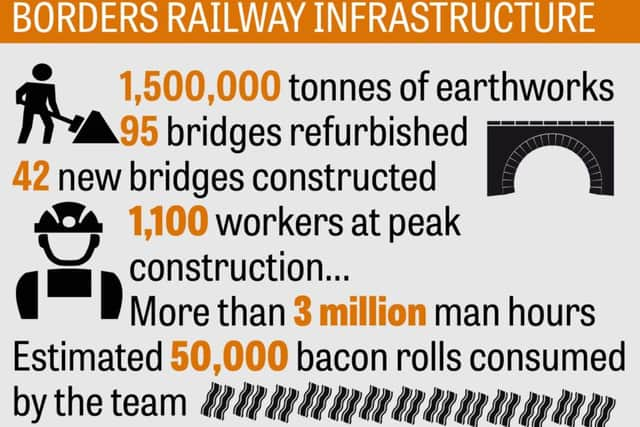Borders Railway unveiled ahead of public opening


The preview service for the media will be followed tomorrow by hundreds of locals who have won “Golden Tickets” getting to chance to sample the service, when special trains will run from each of the seven new stations.
The line will be officially opened by the Queen on Wednesday, who will travel in a steam train on the day she become’s Britain’s longest-reigning monarch.
Advertisement
Hide AdAdvertisement
Hide AdThe route is the longest to be built in Scotland since the Fort William-Mallaig line opened in 1901 and is believed to be the longest line re-opening ever in Britain.


Lord Steel, who campaigned against the route’s closure and was on its last passenger train, will travel on the first train tomorrow from Galashiels.
The former Borders Liberal Democrat MP will say: “The loss of the railway in 1969 was the saddest disappointment in my 50 years in parliament and I am simply delighted we are here today to create an exciting new chapter in Borders history.”
The 30-mile line, which extends from the current line end at Newcraighall on the south-east edge of Edinburgh to Tweedbank, between Galashiels and Melrose, has cost £350 million to re-open, with the project at least three years late and tens of millions of pounds over budget.
Advertisement
Hide AdAdvertisement
Hide AdHowever, the two-year construction work - when it finally started - was finished in June on time and within its £294m agreed cost.


Today’s preview was co-ordinated not by line builder Network Rail or train operator ScotRail but by tourism agency VisitScotland, emphasising the importance of the line to visitors as well as commuters.
Much will be made of the line - part of the former “Waverley” route to Carlisle named after the Sir Walter Scott novels - playing an important role in the Borders becoming a globally renowned centre for the textile industry.
Abbotsford - Scott’s house - is near Tweedbank, while the line also passes the National Mining Museum Scotland at Newtongrange.
Advertisement
Hide AdAdvertisement
Hide AdVisitScotland chairman Mike Cantlay today described Scott as the “father of tourism”, following his 1810 poem Lady of the Lake, which sent scores of visitors scurrying to the Trossachs.


He said: “Sir Walter described the Borders as the land of rolling hills and babbling streams.”
Infrastructure secretary Keith Brown, who joined Mr Cantlay to launch the service at the The Balmoral, the former railway hotel beside Edinburgh’s main station - also Waverley
Rail historian Ann Glen, author of The Waverley Route - Its Heritage and Revival, said: “The Edinburgh & Hawick Railway transformed the textle industry in the Borders by bringing regular supplies of relatively low-cost coal for its mills, support businesses and offices.
Advertisement
Hide AdAdvertisement
Hide Ad“It also facilitated the import of bales of better-quality wools, for example from Australia or remote Kashmir.
“With products made, these could then be sent out in goods vans or in parcels by rail to wholesalers and retailers nationwide.
“Design input also progressed in step with fashion, helped along by the railway and its distribution of newspapers.”